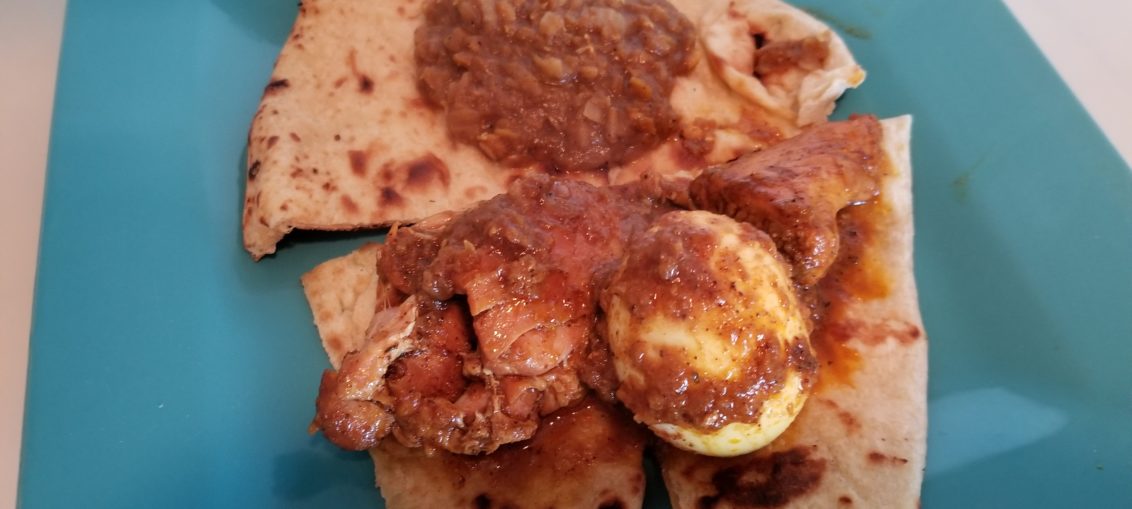
Good morning folks! Hope your brackets are alive and well, if not I hope your liquor cabinet is well stocked.
I can pretty safely guarantee that after reading the title of today’s edition of Sunday Gravy you had one of two reactions. A) – Holy shit, this is going to be fucking great! or 2) What the living fuck is this guy doing? Your specific reaction will be distinctly predicated on whether or not you’ve ever actually tried Ethiopian food.
I LOVE Ethiopian food and only wish I had encountered it much earlier in life. While it may seem a little intimidating at first, once you have your spice supply on hand most of these dishes are very easy to make.
Most of these dishes.
Without generalizing and also without denigrating one or both of these incredible cuisines, the easiest comparison for Ethiopian food is Indian food. They are VERY different in that Ethiopian cuisine uses beef to a great extent but the spices can be considered similar and the heat levels can also be similar. In general Ethiopian food has a little bit more heat but that can be adjusted accordingly.
What do we know about Ethiopia? Well, it’s in the Horn of Africa, it’s basically the birthplace of mankind and was one of the only African nations to remain sovereign during the European colonization of the rest of the continent. The primary language is Amharic which looks something like this…
እንዴት አደርክ DFO – (that’s translated from “Good Morning DFO.”)
Also the country was once governed by regent and emperor Haile Selassie – born “Tafari Makonnen Woldemikael” who just so happened to be recognized as GOD incarnate by the “Ras Tafari” religion. Ras was the designation for “Prince” while Tafari, well you probably figured that one out.
Bob fucking Marley himself declared that “Almighty God is a living man.” As Selassie was alive when the song was written in 1973.
Let’s try real hard not to dismiss the importance of this incredible nation and it’s wonderful people, culture and food.
OK?
Cool.
Ethiopian food is generally served thusly.
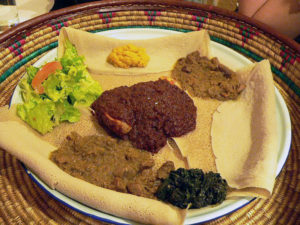
That’s a piece of Ethiopian flatbread, or injera, as the base with a selection of stews, greens and other tidbits served on top. The juices from the food get absorbed by the injera which is not only used as a plate, it is a utensil and a main food component. The concept here is to rip off a piece of the injera, grab a handful of one of the food items and shove it in your mouth, important tip! USING YOUR RIGHT HAND ONLY!
Why are we using just the right hand kids?
Because your left hand is used to wipe your ass you goddamn heathens! If you visit an Ethiopian restaurant DO keep this in mind.
That image right there was basically what I wanted to produce for you today. In fact I worked on 4 distinct disciplines to bring you this meal today and 3 of the 4 were motherfucking superstars. The 4th? It was a failure on the level of the Cleveland Browns last 2 seasons.
Guess which one it was? Yep, the goddamn injera. Homemade injera is a bastard to produce and after reading multiple recipes I determined that a successful homemade injera happens about 30% of the time AT BEST. Since mine failed miserably I’m just going to hit the basics real quick-like so I can get to the dishes that did work.
Remember I share the successes as well as the failures.
Injera is made with “teff” flour -an Ethiopian ancient grain -, water, natural yeast and several days worth of fermentation.
The water is added to the flour and the dough is allowed to ferment for anywhere from 2 to 5 days in order to develop the distinct sourdough-like taste that injera is known for. The “yeast” is acquired just like a “farmhouse ale” is produced, by using natural airborne yeast to help ferment the dough.
You cover the dough loosely with some plastic wrap and place the bowl in an out of the way spot in the kitchen. Here’s day 1.
Then on to day 2.
Yep we’ve got some bubbling shit at work there. Let’s let it go to day 3 and see what happens.
Maybe my brain should have been getting some remote alarm sounds at this point but I soldiered on for 4 full days.
The idea is the cooked bread should develop a lot of little holes and crannies for the stews to soak into. The bread is cooked in a skillet much like a crepe.
It started out OK but soon took a sinister fucking turn.
Which looks absolutely nothing like it’s supposed to.
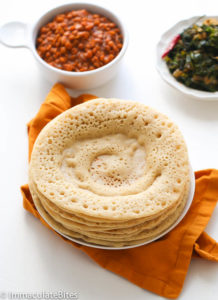
That linked website, AfricanBites.com was immeasurably helpful and all of my successes were inspired by it.
End results?
It looked OK for a moment but upon tasting? Guess I got the wrong goddamn native yeast because my injera tasted more like chewing on an entire bottle of Anacin than a tasty, sourdough flatbread. THIS IS ALL ON ME! That glorious linked site had nothing to do with my failure.
Now, looking again at the banner photo…
Yep, that’s served on a batch of naan from the Indian place across the street from me. Not on some glorious freshly homemade injera.
What is it with me and the bread fuck ups?
That was an attempt at homemade flour tortillas from this post last year.
Enough failure!
Let’s move on to delicious successful things because everything else from here on out was FUCKING GLORIOUS.
Three remaining disciplines. The first of which is Niter Kibbeh or spiced butter. This is used in most of the sauteing you will encounter when cooking Ethiopian foods. It is essentially ghee but it’s seasoned with a whole goddamn spice market. While original inspiration came from Africanbites.com I read enough recipes that I came up with my own variation. Oh yeah, you are going to use a shit ton of unique spices for this stuff.
Niter Kibbeh: Spiced clarified butter.
One pound of butter.
What? Yep a whole goddamn pound. Four sticks of butter.
1 onion chopped.
5 cloves of garlic chopped
1 Teaspoon cardamom
1 Teaspoon fenugreek seeds
1 teaspoon ground cumin
1-2 tablespoons finely chopped fresh ginger
¼ teaspoon grated nutmeg
1 teaspoon dried oregano
½ teaspoon ground turmeric
1 cinnamon stick
1 tablespoon of crushed dried basil.
4 whole cloves.
Cut that butter into chunks and place in a medium saucepan.
We are going to cook the butter down over low heat for about 20 minutes to allow all of the milk solids to come to the surface.
Using a spoon gently remove the layer of milk solids. Yes, this will take some time but this shit is important dammit.
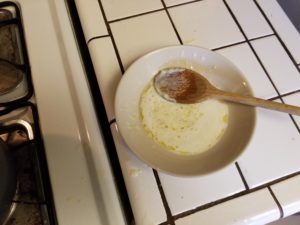
When the solids have been removed it’s time to take that insane list of ingredients up there and get them all into the pool!
Let this simmer on low for about 20 minutes. When done, cover a bowl or container with some cheesecloth and strain the butter through the cheesecloth. This should give you a very clear, spiced clarified butter.
This can be covered in an airtight container and stored in the fridge for about a month. I will be using the kibbeh to saute some veggies in to build the last 2 dishes but it’s INSANE on it’s own. Scramble some eggs in it, spread some on toast. Make garlic bread with it. Put it on popcorn. This is the good shit right here!
Holy Jesus we’re getting long winded and we still have 2 dishes to go. We better get to the goddamn speed rounds.
I made two different stews for today. The first is a vegetarian red lentil stew that may have the powers to convert anyone to being a vegan.
Real quick though, the next two recipes use an Ethiopian spice blend called berbere which can be made at home using all of those insane ingredients that I used in the ghee and also adding in some dried red chilies for heat. Or you can be like me and order yours from Amazon. A four ounce packet should cover both of these next two dishes.
Misir Wot! Ethiopian red lentil stew
3 tablespoons of niter kibbeh.
1 cup of dried red lentils
1 large red onion chopped pretty fine
5 cloves of garlic minced
1 tablespoon of fresh ginger minced.
1 1/2 tablespoons of berbere mixture
1 teaspoon of cumin
1 teaspoon of paprika
1/2 teaspoon of freshly ground black pepper
Salt to taste
1 tablespoon of tomato paste
2-3 cups of chicken stock. Store bought is fine.
Soak your lentils for about 2 hours. Gather your ingredients before you start the saute process. It will make this shit a whole lot easier.
Get a Dutch oven out and heat it up to a good medium heat. Next add in the niter kibbeh just to melt it down. Add in the red onion and saute for about 10-12 minutes. This step, or something like it, will be used again in the last recipe and it is a common cooking technique since Ethiopian food uses a fucking farm field worth of onion.
Both of the stewed dishes use quite a bit of our two friends garlic and ginger so let’s get better acquainted with them.
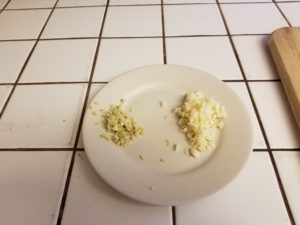
Ginger, Garlic
When the onion is a nice sauteed brown, add in 1 tablespoon of the berbere, garlic, ginger, cumin, paprika and black pepper. Cook and stir for 3-4 minutes until the smell starts driving you insane with deliciousness.
Then we are going to add the rinsed and drained lentils and the tomato paste. Stir everything together and saute for another 2-3 minutes.
Finally we are going to add in the first 2 cups of chicken stock and bring this to a low simmer.
This is going to cook for about 35-45 minutes. Since the lentils have been soaked they will cook pretty quickly. When the stew has reached it’s desired consistency add in the final 1/2 tablespoon of the berbere and taste for seasoning. Add salt if needed. Now just look at this shit.
If you wanted to stop here and serve this by itself you sure as fuck could. This is scary delicious. Especially for a known carnivore like myself. Here’s a closeup of it served with some naan.
It is spicy, I mean lots of various spices spicy as well as having a low lingering heat from the berbere. It’s meaty while being meatless and has savory notes from the garlic, onion and ginger that will knock you on your ass! Ridiculously good. In fact I will be having this again as a purely vegetarian meal real soon.
But we have one more recipe to go since we have some berbere and niter kibbeh just begging us to do more things with them.
What have we got?
Not “what”, WOT!
Doro Wot! Spicy chicken stew in onion sauce with egg.
2-3 pounds of chicken. You can use a whole chicken here cut into pieces but I used a mix of boneless/skinless thighs and breast.
Quick tangent. While going through multiple recipes researching this dish one of the recipe authors said “I’m going to declare we start calling boneless skinless chicken breasts ‘BSCBs‘”. No. No we won’t. FUCK YOU WE WILL NOT! If you don’t have the time to spell it out properly then I don’t have the time to read you. Fuck off!
As you were.
2 large onions finely chopped in a food processor.
3 tablespoons of niter kibbeh
4 garlic cloves minced.
1 tablespoon of fresh ginger minced.
1 lemon
1/4 CUP of berbere
1 tablespoon of cumin
1 tablespoon of paprika
1 tablespoon of tomato paste
Salt and pepper
2 cups of chicken stock.
4-6 hard boiled eggs peeled.
Let’s get after this!
Rough chop your 2 onions and put them in your handy food processor
Give these a few pulses and we get ourselves a nice onion puree.
Of course you can fine chop these by hand if you don’t have a food processor but goddamn is your chopping hand going to get fatigued.
Next cut the pieces of chicken into chunks, season with some salt and pepper and squeeze the juice of that lemon over the top. Oddly enough there is no browning of the chicken bits. I know! Surprising!
This only needs to sit for about 30-45 minutes. Any longer and it starts breaking the chicken down a little too much.
Get out your trusty Dutch oven and let’s brown some onion.
Quick note: You may have noticed that I used the same Dutch oven for both the Misir Wot and the Doro Wot. I actually made the compound butter and the lentil stew on Saturday then cooked the main chicken stew on Sunday. The lentil stew can refrigerate overnight and this will actually allow the flavors to mingle some and enhance the flavor.
Interesting technique here: we will not be browning the onions in any oil or butter, which is entirely odd. The browning in a dry pan will impart a toasty flavor upon the onions which is key to the finished product. Don’t worry, there will be plenty of onion juice.
Know how long it took to properly brown these?
About 40-45 minutes.
I know, I know but it really is worth it. Now add in the berbere (reserving 1 tablespoon), cumin, paprika, garlic and ginger and give a good stir. Let the spices get together here for about 3 minutes or so. Next add in the niter kibbeh and the tomato paste and saute for 2-3 more minutes just to get the flavors combined.
Your olfactory nerves are going to cause your brain to almost shut down. This smells fucking intoxicating.
Add in the chicken pieces and be sure to toss and coat well with the spices.
Pour in the chicken stock, reduce the heat to a low simmer, cover the pot and cook for 40 minutes.
When the 40 minutes have passed, remove the lid and add in the reserved tablespoon of berbere. We will cook on low with the lid removed for another 45 minutes until the stew is nice and thick.
Finally add in the peeled hard boiled eggs and let them hang out in the sauce for about 5-10 minutes. Keep them whole.
To serve, get your non-fucked-up bread item of choice, spoon a good dollop of the misir wot on one edge, then spoon another good heap of the chicken stew, be sure to include one of the eggs. Now ladle some sauce over the chicken and egg and serve.
Spicy, rich, earthy, salty, exoticly spiced, deeply comforting, familiar yet unique.
One of the best things I’ve ever made.
Period.
Thanks for following along as we took this unique culinary voyage. Hopefully I’ve given you enough incentive to at least try an Ethiopian restaurant and for those of you already familiar with this spectacular cuisine, hopefully I’ve inspired you to try making it at home.
It’s a whole new world to explore.
I appreciate you being there dear reader.
Now back to your brackets!
PEACE!
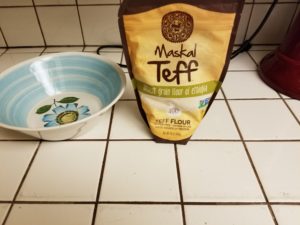
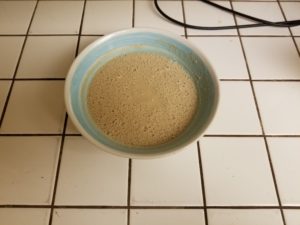
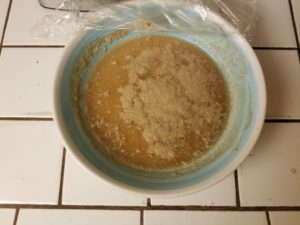
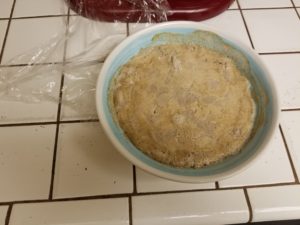
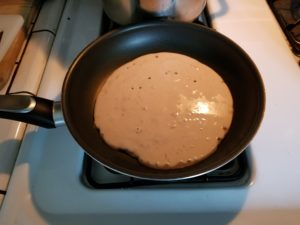
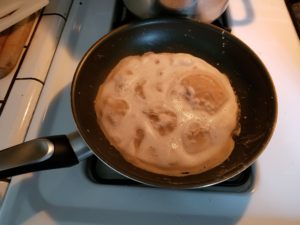
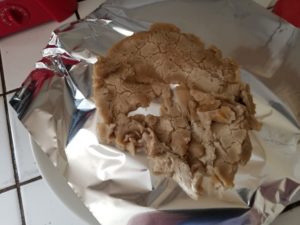
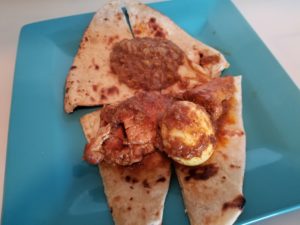
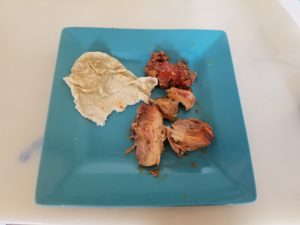

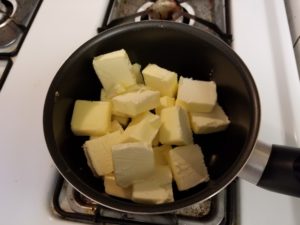
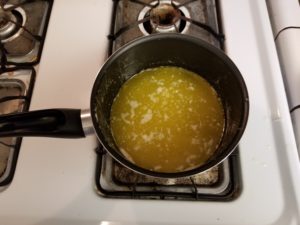
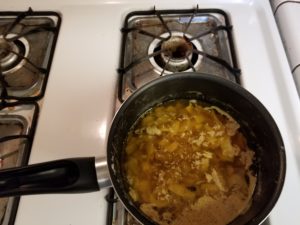
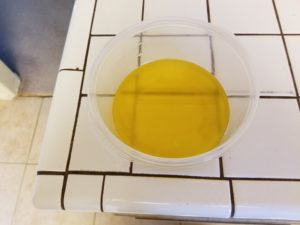
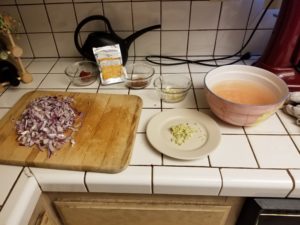
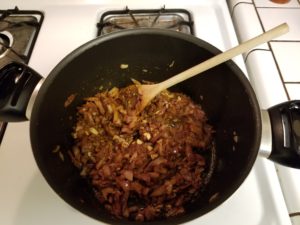
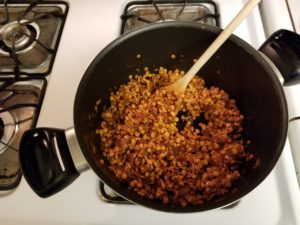
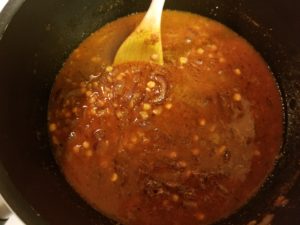
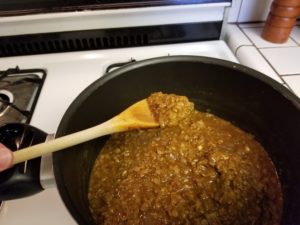
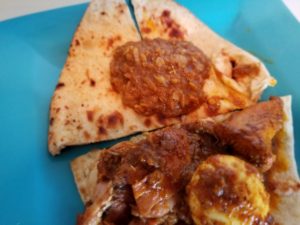
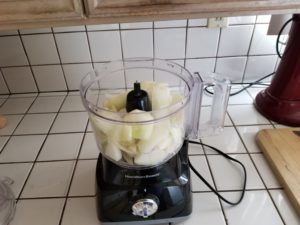
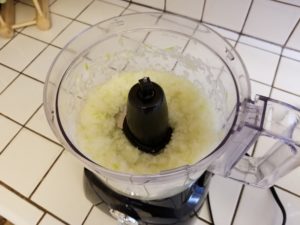
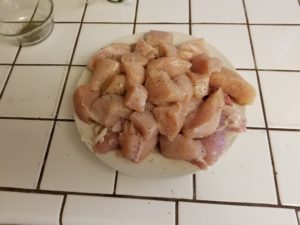

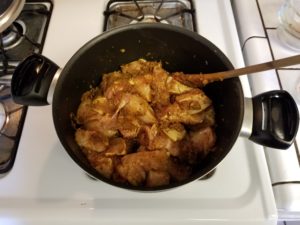
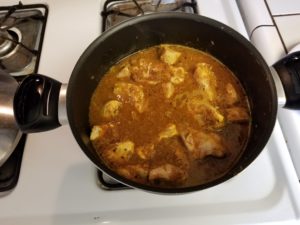
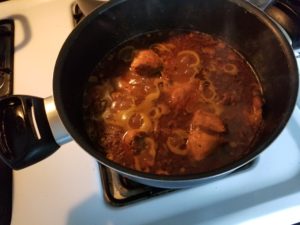
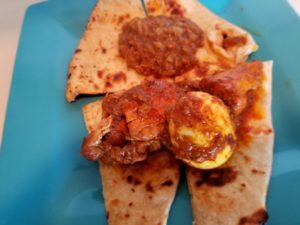
[…] We begin preparation the day prior to meal service. First by making ghee. We’ve made a version of ghee before called niter kibbeh. […]
[…] you’re a regular reader you may harken back to earlier this year when we made an Ethiopian meal including “doro wat” which was chicken stewed in a spicy sauce with onion and tomato […]
When I made injera a couple years ago, this is how it turned out. It was pretty tasty! My main problem was that I initially didn’t water the batter enough, so my injera was too thick. I did my starter in the oven on the lowest setting for a few days, don’t really remember what it looked like.

That looks fantastic. I’ll try again.
Btw, I resisted Ethiopian food for way too long when I lived in DC. The eating with my hands thing put me off. Eventually when I relented holy shit did i love it. So damn tasty.
So where’s the good Ethiopian food in LA? Other than your house.
There is a Little Ethiopia section off of Fairfax just north of the 10. Plenty of restaurants and markets.
That’s where I’ve eaten it. The coffee ceremony is a really cool thing too.
Thank you for sharing your failure.
Also what Deanna Favre said to her (then-) husband on their wedding night.
Fucking Ethiopian food is the shit!
Such a wise people to think up the edible plate.
I know you usually reject store-bought, but store-bought injera is quite good if you get it from a specialty shop.
Same with tortillas.
Sometimes, it’s better to leave some things to the professionals…
I would encourage anyone to use store bought in this particular case. You can also buy the niter kibbeh premade which would be a lot easier.
It was fun to put together but a lot of work and a lot of Amazon orders. Fucking delicious though.
Lentils are great, and I’ve only eaten them in kinda thin soups. That stew looks delicious.

Regarding brackets, I picked Xavier. Yep, I’m terrible at this.
I previously made a lentil soup with a leftover prime rib bone but this may be the best lentil dish I’ve ever had. Lentils are a prefect flavor absorbing sponge and these were incredible.